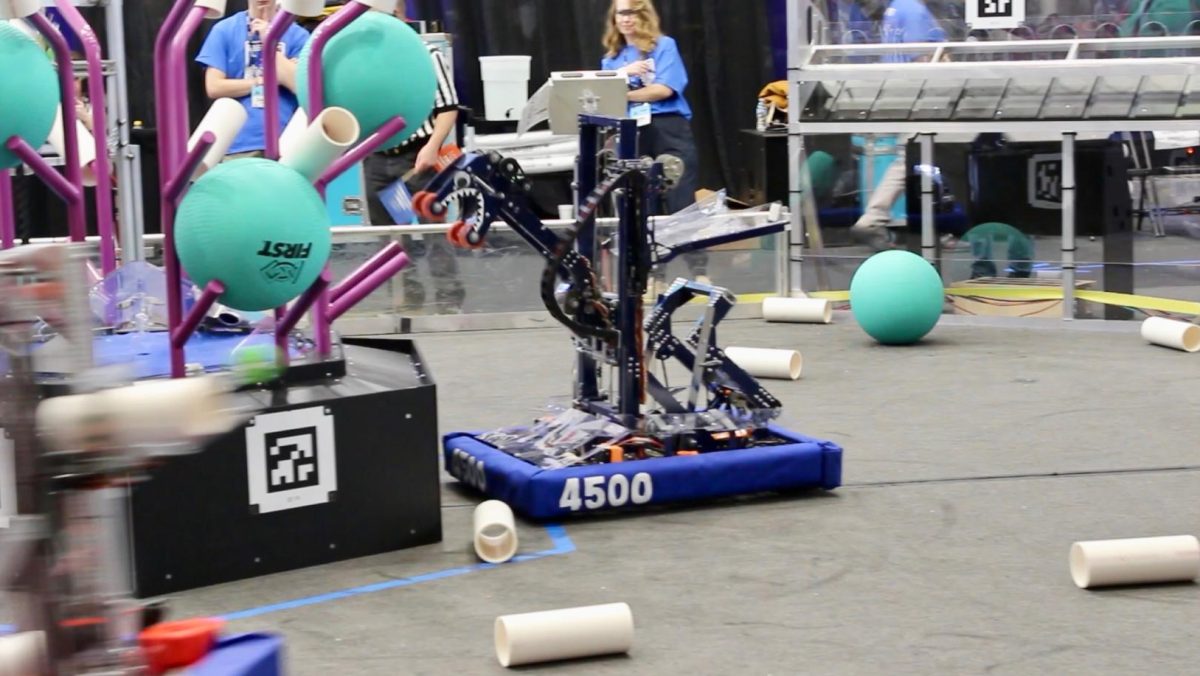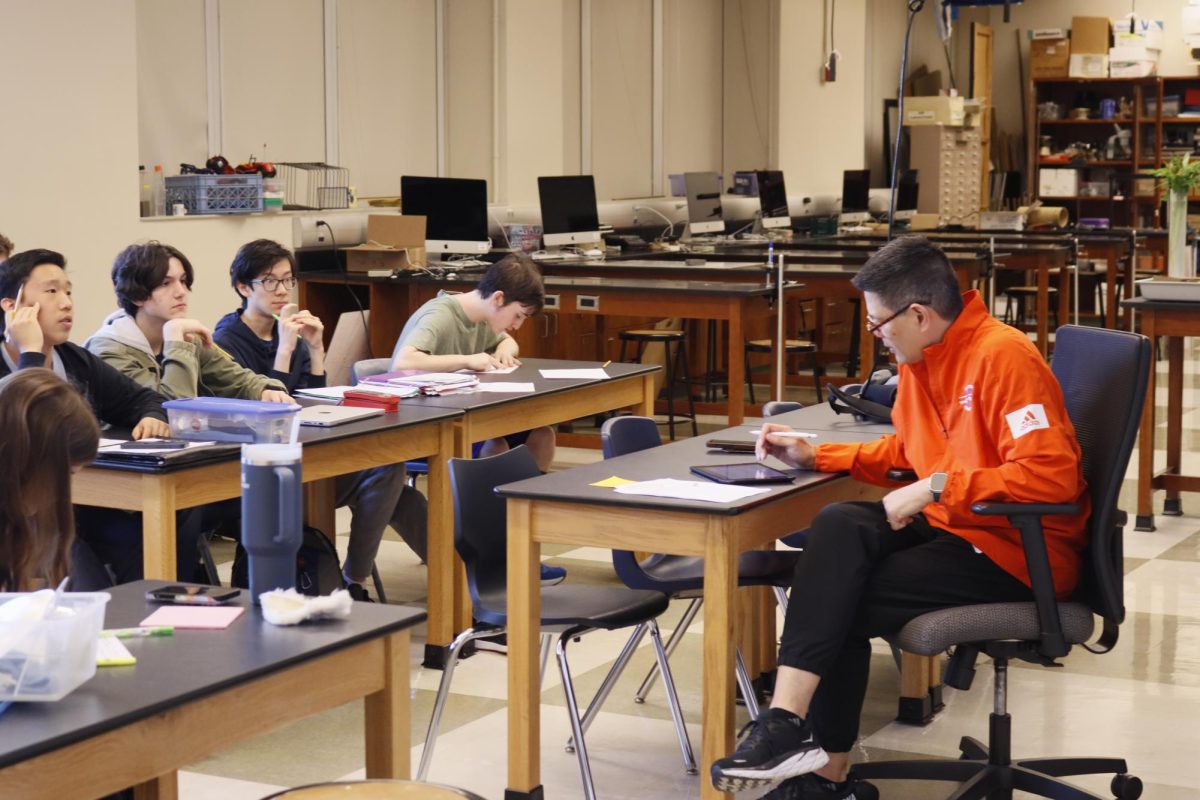
Back in late September, the topic of backpacks sparked my interest when I was looking to write an article for the third issue of the Globe. What started as an interest grew into a fascination which took me on a journey through the uncharted backpack regions of the CHS community. I came back with enough warnings, tips and solutions to write an article, or maybe something more. Where it all began was the nurse’s office.
Up the three flights of stairs, through hallways and into classrooms, there is no more loyal and constant a companion than the backpack. A student’s success at CHS is partly due to his or her backpack and its ability to carry learning supplies, yet lately, CHS backpack weights have gotten out of control.
Into the Nurse’s Office
School Nurse Dede Coughlin supervises the health of CHS students. Among those who come to her office are people who have developed back injuries, the majority of which are caused by backpacks.
“Often kids come in here to weigh their backpack and they’re anywhere from 20 to 30 pounds, and that’s a huge problem,†Coughlin said. “It’s a big strain, to pick up that much weight.â€
Coughlin believes that most of the back pain and shoulder injuries of students at CHS are influenced by how people wear their backpacks as well as the sheer weight of the packs.
“The proper thing would be to have a good backpack that’s hiked up on your back and there’s a strap around your middle, because that more evenly distributes the weight,†Coughlin said. “But what people do is they sling [the backpack] off the back of their shoulders, it lands way down low on their back, so it’s pulling their shoulders and pulling their back.â€
You can adjust the straps of your backpack to the correct fit without much difficulty, but limiting weight is a more difficult problem to tackle.
“Students don’t use their lockers here, so what happens is, people instead of carrying their textbooks when it’s time for class, they simply carry their textbooks all day long,†Coughlin said. “And they carry all of them … so that’s really, over a day’s time, a lot of weight.â€
The school provides four minutes between class periods to visit the locker, and a neat trick a few have picked up is to rotate between two backpacks, one before lunch and another after. But for students who don’t have nearby lockers at hand, late or no lunch periods, Coughlin suggests a different solution.
“The very best thing that nobody will do but about two or three people use is a rolling backpack,†she said. “That solves a whole lot of problems.â€
Several research articles state that the weight of one’s backpack should not exceed 10 to 20 percent of one’s body weight. Coughlin acknowledged those statements but couldn’t comment on their validity.
“Does [improper use of backpacks] cause permanent long term damage?,†she asked aloud. “I don’t think there’s been enough studies about that, but I do know that it can cause short term discomfort for your shoulders and your back and so who wants to go through that?â€
Unfortunately, many CHS students have gone through back pain. One CHS student shared his story and some solutions to the problems he faced with carrying a heavy load around Clayton.
To the Library
Although not the prevalent method, rolling backpacks are the norm for CHS junior Ben Cook.
“I remember I had to go to physical therapy when I was in 8th grade because I had so much weight on my shoulders,†Cook said.
Cook has a medical condition that won’t allow him to put too much weight on his shoulders, so he began using rolling backpacks during his sophomore year when the combined weight of his textbooks and binders became too heavy.
“[During freshman year] I did actually use a backpack that you wear on your shoulders after I had my [corrective] surgery and within a week I had to stay home from school because it was so bad,†Cook said.
Though Cook’s case may be unusual, his unique experience provides some insight into the consequences of overweight packs.
“Of course buying a backpack that rolls on the ground is a helpful thing, but if you can’t do that because I know that’s not an option everyone would like to use, [try] back exercises. You can just go online and find exercises that you can do, or different stretches. If you do those each day it will fix you up, [and] you’ll be fine,†Cook said.
The measures a student can take to prevent back and shoulder pains are limited to organization and sacrificing tradition for rolling backpacks, but the school can help as well.
“Well of course there’s the argument about going digital with textbooks so that you don’t need to carry around physical books,†Cook said. “But having two copies, one for home and one for school is always helpful.â€
Whether CHS decides to direct its funding towards back pain or not, it is paramount that students make attempts to avoid injuring their shoulders and backs.
“If you do have back problems, don’t let it get out of hand because it can be bad, it can get really bad if you just let it slide,†Cook said.
The Weigh In
This project began as a way to shed light on problems within CHS which stem from unhealthy dependency on the backpack, but I’d like people to think of this not just as a health warning but as an exploration into the inner workings of the CHS population.
On Oct. 1, a student organized event, “The Weigh Inâ€, took place during student lunch hours to weigh the backpacks of the student body. We weighed a total of 2482.5 pounds of backpack and talked to many students about their school luggage.
Ultimately, we found a myriad of stories and problems that were backpack-related, as well as a few solutions. 








Jeffrey Cheng • Nov 11, 2012 at 9:49 pm
What a great topic!